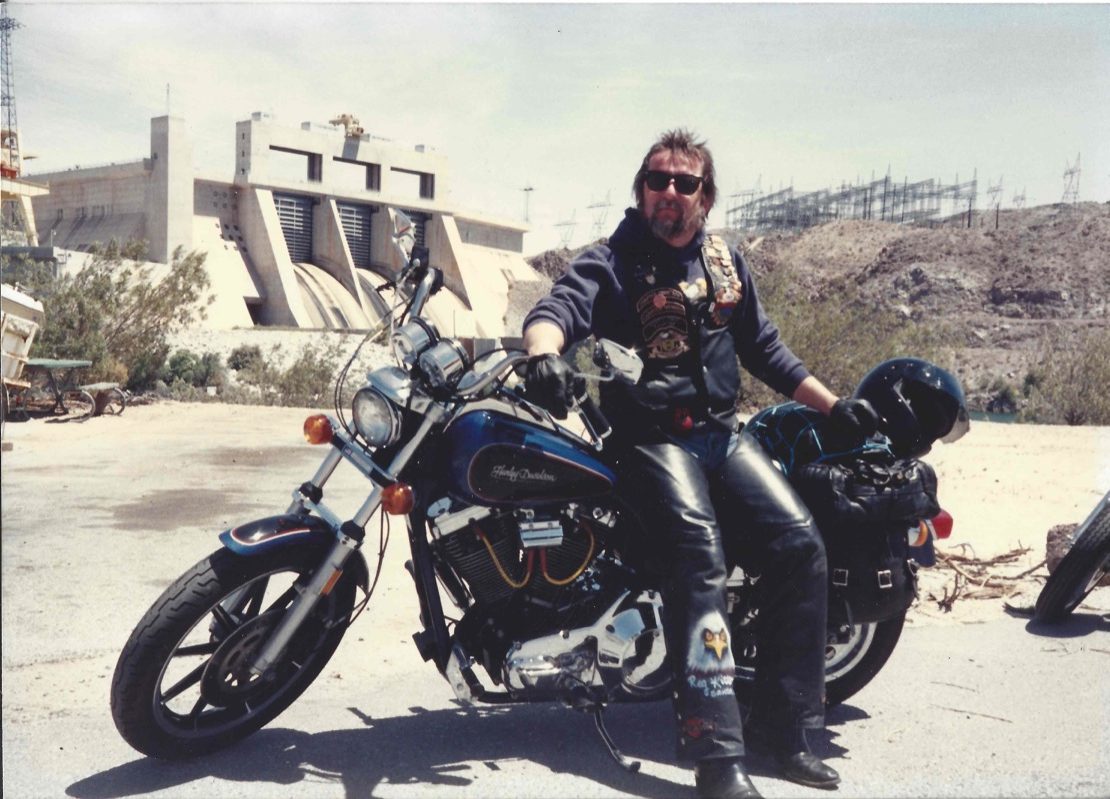This will cost my editorial license a few points, but it’s not much of a stretch to say that THUNDER PRESS has roots with BMW.
It was 1987 and I was suffering from that itch that only a new motorcycle can scratch. I had a couple of decades of riding on the books so I had a fair idea of what I wanted, but it took several test rides, a lot of reading, and numerous jaw sessions to have me conclude that a new BMW K75S was going to replace my Honda Nighthawk 650. I hammered out a deal with the local dealer, and told him I’d be there Saturday to pick up the blue beauty.
After leaving work Friday I figured a quick stop at the new San Jose Harley dealer would cement my BMW choice. I was persona non grata at the older Harley dealer in town, probably because I had asked him if the drip pans under the new Shovels were an option, or standard equipment. I found these same Shovelheads at the new dealer, but absent the drip pans. Oh, they still leaked, but the new guy was better at marketing… he’d wipe up the drips.
A quick walk through the new Harley showroom had proved my BMW choice was the right one. As I was leaving, the better-at-marketing dealer asked if I’d like to see one of the new “Evolution” FXRs. It had just arrived, and was being set up. “Sure, why not,” I answered. I was familiar with the Evo, but figured it was just more of the same; I’ll admit to thinking along the lines of “lipstick on a pig.”

In my much younger days, I had an Italian drinking buddy who regularly experienced “colpo di fulmine.” This was usually uttered after a few drinks and when a woman—almost any woman—entered his sight. Literally it translates to something like lightning, or thunder strike. What it means on the street is “love at first sight.” Looking at that metalflake blue and black 1987 Harley-Davidson FXRC, “colpo di fulmine” came instantly to mind. The BMW was history.
 It didn’t take many FXR rides to realize that I’d entered a motorcycle culture quite different from what I was used to. If anything, it was less about motorcycles, but certainly more about the people riding them… Harleys, specifically and almost exclusively. I like all motorcycles, but the camaraderie I found among Harley people was both seductive and highly entertaining. The most visible differences between my new best friends and me were, one, I wore a helmet (remember this was pre-helmet law 1987) and, two, I wasn’t inclined to hug everything with a heartbeat.
It didn’t take many FXR rides to realize that I’d entered a motorcycle culture quite different from what I was used to. If anything, it was less about motorcycles, but certainly more about the people riding them… Harleys, specifically and almost exclusively. I like all motorcycles, but the camaraderie I found among Harley people was both seductive and highly entertaining. The most visible differences between my new best friends and me were, one, I wore a helmet (remember this was pre-helmet law 1987) and, two, I wasn’t inclined to hug everything with a heartbeat.
I have never been—and am still not—a group rider or club joiner; to me motorcycles are a solo pleasure. Despite this, and at the request of the dealer, I founded the Santa Cruz H.O.G. chapter in ’88. This compounded a problem I had from the beginning of my Harley adventure: where to find ride and event info. The primary sources were shop flyers, and word-of-mouth, the former often badly done, and the latter not that reliable. Easyriders magazine held sway nationally, but lacked any relevant local content. There were a couple of Harley-centric regional pubs, but they specialized in good intentions, bad execution, awful jokes, and nekkid wimmins… nothing wrong with that… rather than useful event news.
I’ve always been a bit of an entrepreneur—three small businesses were part of my past—so this lack of needed info got the gears turning. Though slowly. It took a couple of years of casual thought for me to outline a plan. My first idea was to gather all the flyer info, verify it, and produce a monthly calendar. That thought died as I realized the effort would quickly become drudgery. Then, the idea of an actual Harley-Davidson motorcycle newspaper grabbed hold and would not let go. The biggest obstacle in the way of this was the “golden handcuffs” with which I was shackled. That is, I had a well-paying position in the computer industry with all the status, stock options, large staff, and private office that a growing Silicon Valley could offer. Cutting loose from this was gonna cost me in any number of ways.
On the other hand, I was bored out of my friggin’ skull. It was time to leave.

In mid-December of 1991—and with the blessing of my wife—I gave notice. On January 1, 1992, I called myself a publisher. This, despite the fact that I had little knowledge of reporting, paste-up, photo screens, editing, ad sales, printing, distribution… and my writing was suspect. I gave myself three months to learn enough of these skills to meet my self-imposed deadline of April for THUNDER PRESS , Issue #1.
My first shock as a “publisher” was cultural. In my corporate position I was surrounded by a support network, and a staff to do the real work. On day 1 of THUNDER PRESS I sat in my living room with an Apple computer in front of me (loaded with Word and PageMaker), a fax machine to my left, and a push-button phone to my right. No staff, no help, no clue. What the hell had I done?
What I had done was to step off a cliff, expecting to learn how to fly before crashing on the rocks below.





















[…] Click here to read part one […]